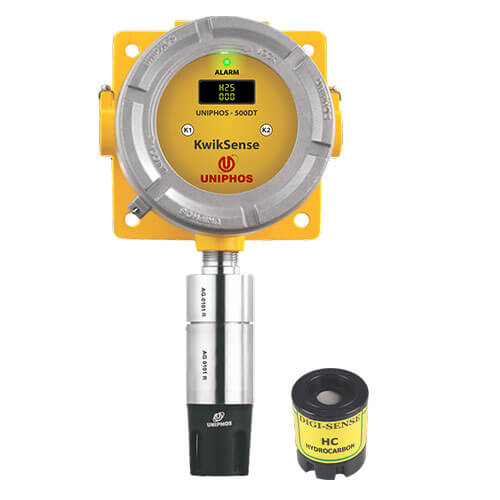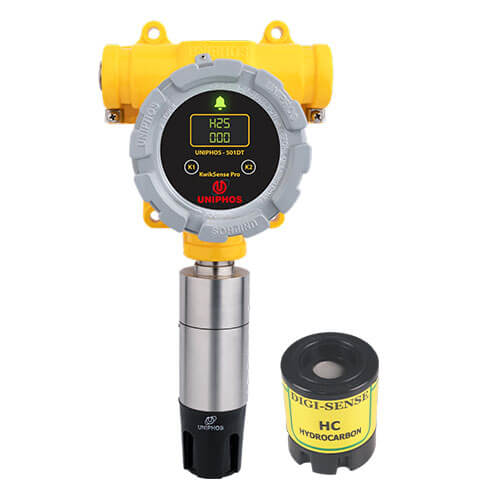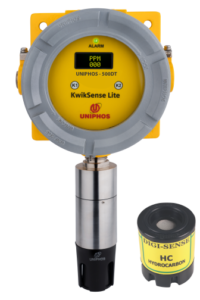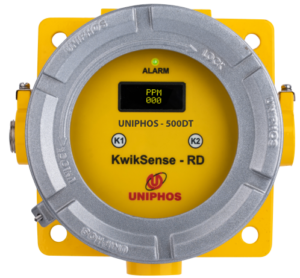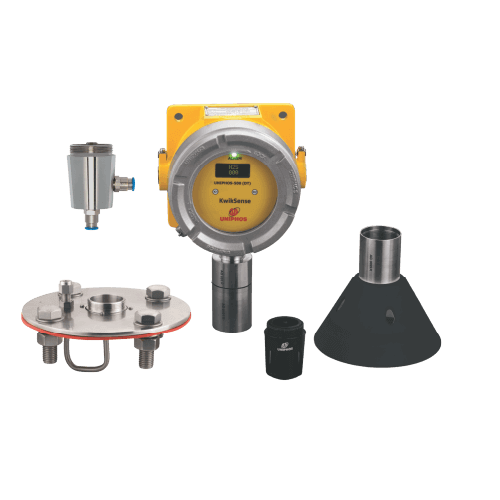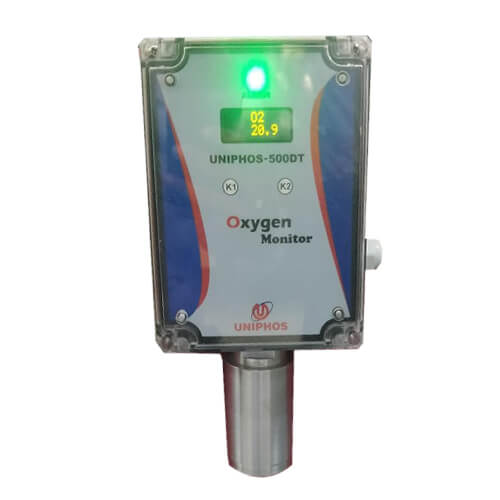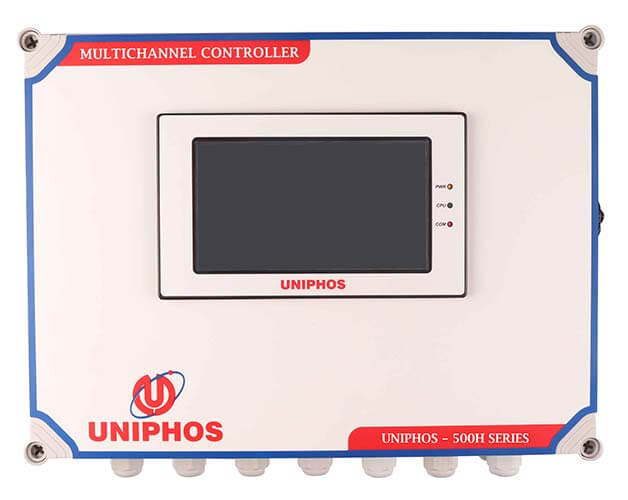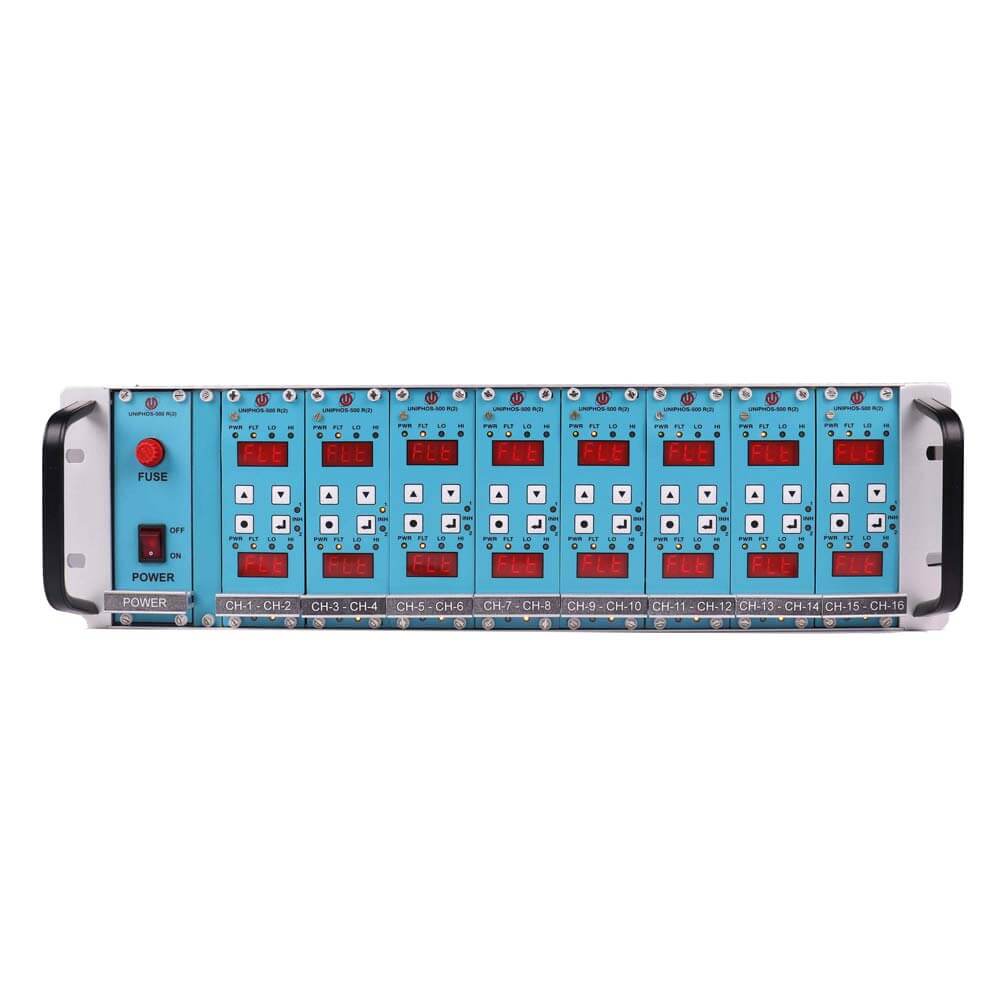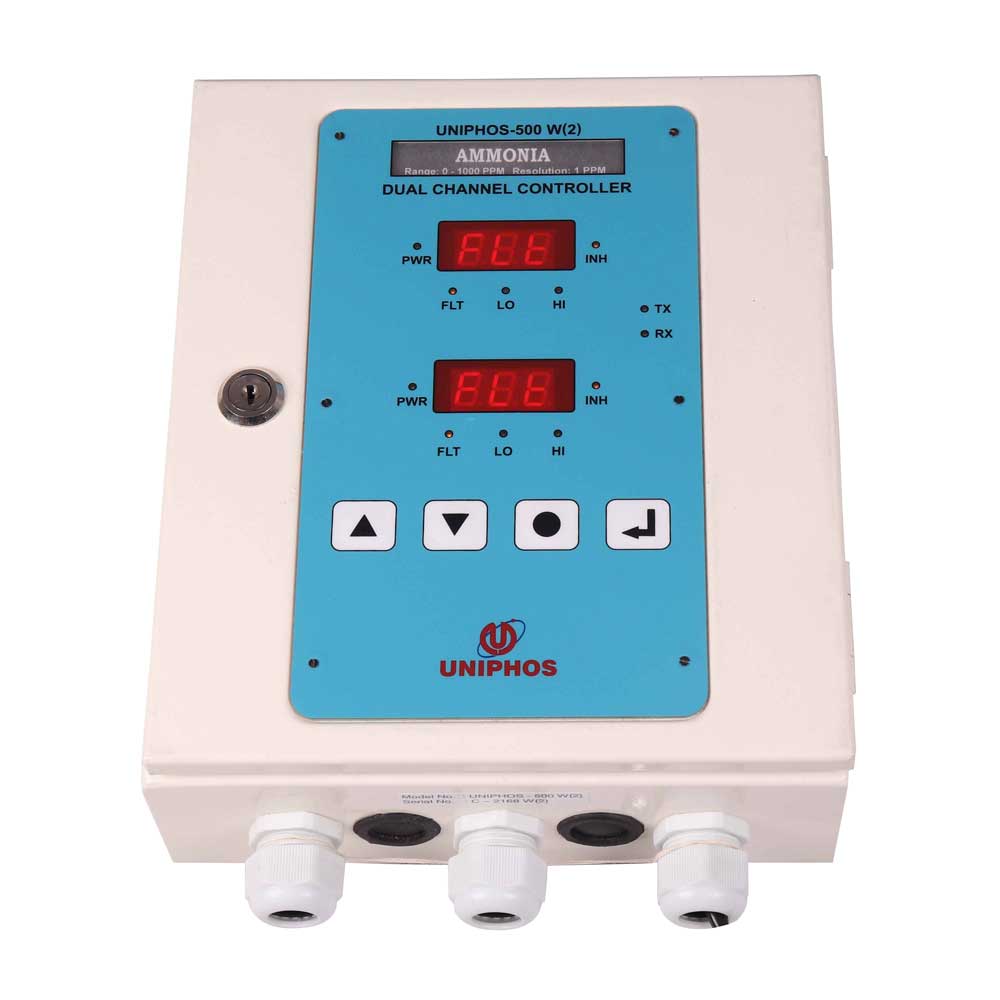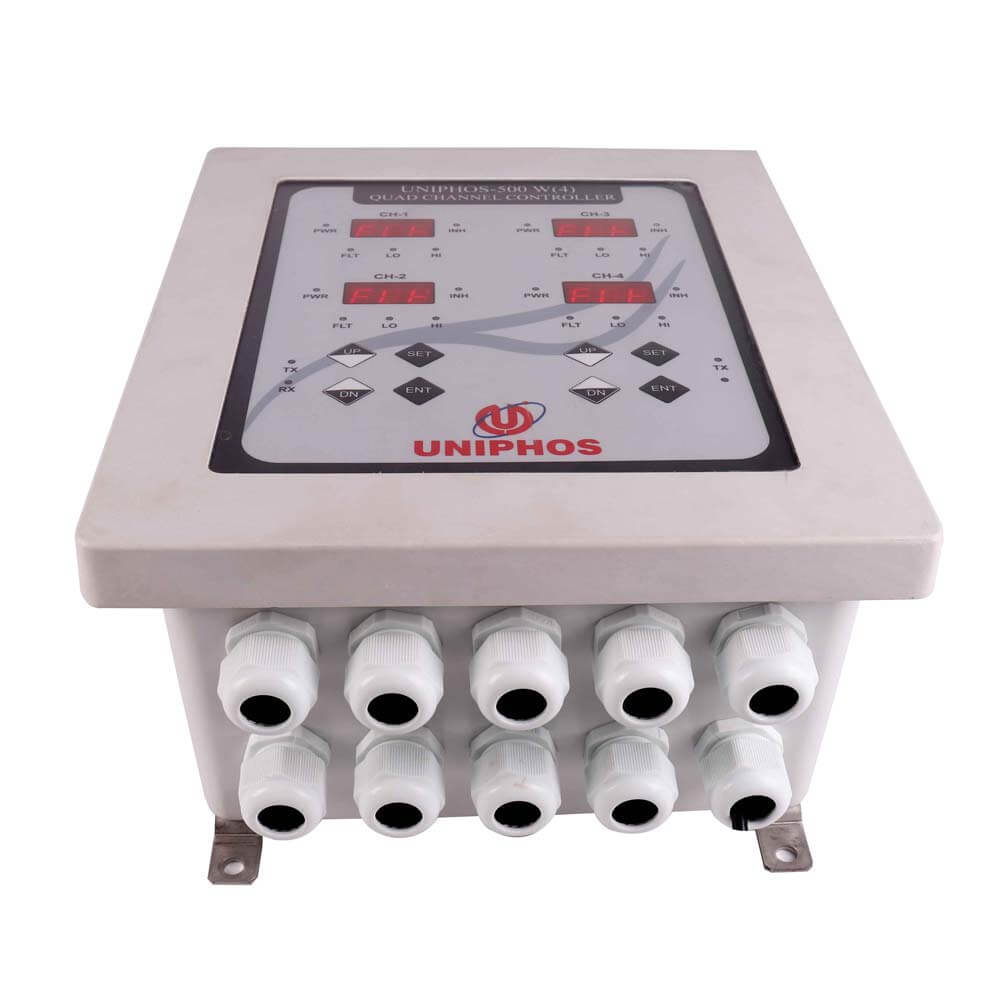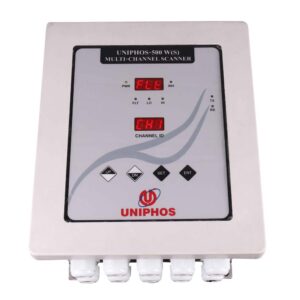KwikSense Range
The Uniphos KwikSense range of gas transmitters provide a reliable state-of-the-art solution for the detection and continuous monitoring of toxic and flammable gases in the industry. With the ability to incorporate a wide range of sensing technologies the KwikSense Transmitter is engineered to deliver in the most challenging conditions to safeguard your valuable assets.
KwikSense Smart
Digital Gas Transmitter
The KwikSense Smart Digital Gas Transmitter is an advanced universal gas transmitter for the detection of wide range of toxic and flammable gases.
KwikSense Pro
Smart Digital Gas Transmitter
The KwikSense Pro Smart Digital Gas Transmitter is an advanced universal gas transmitter for the detection of wide range of toxic and flammable gases.
KwikSense LITE
The KwikSense Lite Gas Transmitter is a cost- effective solution specifically designed to meet your gas monitoring needs.
KwikSense RD
The KwikSense RD remote Transmitter allows users to view gas concentrations from a transmitter located in remote location.
KwikSense Accessories
There are a range of accessories for the KwikSense transmitter that can be used in a wide variety
of applications.
Hospital Oxygen Monitor
The Uniphos 500 fixed Hospital Oxygen gas monitor has been specifically designed to continuously monitor Oxygen leakage in hospital wards.
Controllers
Uniphos provides a wide range of controllers ranging from simple 2 channel controllers to sophisticated systems capable of connecting up to 32 transmitters. With the ability to activate alarms at multiple levels and control other equipment, apart from displaying gas concentration levels and the live status of the monitoring system, Uniphos Controllers are the perfect companion for the entire range of KwikSense Smart Digital Gas Transmitters.
Uniphos 500 H(16) Multichannel
Controller with HMI
The Uniphos 500 H(16) is an advanced multi-channel controller with 7” TFT touchscreen display.
Uniphos 500 HA(16) Multichannel Controller with HMI
The Uniphos 500 HA(16) is a multi-channel controller designed to suit various onsite requirements.
Uniphos 500 R2 Multichannel Rack Mountable Controller
This compact multi-channel controller is designed to accommodate 16 channels in a single standard 19” rack.
Uniphos 500 W2 Dual Channel Controller
The Uniphos 500 W2 is a dual channel, wall mountable, easy to configure control system.
Uniphos 500 W4 Quad Channel Controller
The Uniphos 500 W4 Quad channel controller can simultaneously monitor up to 4 gas transmitters.
Uniphos 500 WS Eight Channel Scanner
The Uniphos 500 WS eight channel scanner can simultaneously monitor up to 8 gas transmitters.
FAQ's
What is a fixed gas detector?
A fixed gas detector is a safety device used to monitor the presence of hazardous gases in a specific area. Unlike portable gas detectors, fixed gas detectors are permanently installed in buildings, industrial facilities, and other locations where potential gas leaks or releases may occur. The main purpose of these detectors is to provide continuous monitoring, ensuring early detection of gas leaks and preventing potential disasters.
What are the benefits of using fixed gas detectors?
A fixed gas detector can promptly identify the presence of toxic or combustible gases before they reach harmful levels, enabling timely actions to prevent accidents and protect personnel. These detectors can operate 24/7, providing constant monitoring of the surrounding air, even in remote or hard-to-reach areas, ensuring ongoing safety and peace of mind.
They are well-equipped with alarms and alert systems that instantly notify workers and supervisors when gas concentrations exceed predefined thresholds, allowing for swift evacuations and response.
Many fixed gas detectors can log data over time, facilitating trend analysis and helping in understanding gas concentration patterns for better safety measures. Employing fixed gas detectors ensures commitment to safety standards and regulatory requirements, fostering a safe work environment and avoiding potential fines or penalties.
What gases can a fixed gas detector detect?
A fixed gas detector is designed to monitor and detect a wide range of gases, including flammable gases, toxic gases, and oxygen depletion. Flammable gases such as methane, propane, and hydrogen are potentially explosive, and their detection is crucial to prevent accidents or fires. Toxic gases like carbon monoxide and hydrogen sulfide pose health hazards, and early detection helps protect workers’ well-being. These fixed gas detectors can also monitor the levels of oxygen in the air, as oxygen depletion can be hazardous in confined spaces.
Are fixed gas detectors easy to install?
Yes, fixed gas detectors are designed to be easy to install, making them user-friendly for various applications. The gas transmitter is equipped with straightforward installation procedures, enabling swift integration into existing gas detection systems or new setups. Whether you need to monitor gas levels in industrial environments, laboratories, or commercial facilities, these detectors offer a hassle-free installation process.
Typically, a fixed gas detector comes with clear instructions and mounting options, allowing technicians to securely affix them to walls, ceilings, or other suitable locations. Some models might even have plug-and-play sensor capabilities, reducing setup time and effort.
Do fixed gas detectors require maintenance?
Fixed gas detectors do require maintenance to ensure they are in good working order. Regular servicing, maintenance, and calibration are essential to keep these detectors functioning effectively. By undertaking routine maintenance, potential issues can be identified and rectified before they become serious concerns. This helps to maintain accurate gas detection and ensures the safety of the environment and personnel in the area where fix gas detectors are installed.
Where should a fixed gas detector sensor be mounted?
A fixed gas detector sensor should be strategically mounted in a location where it can effectively monitor the targeted area for potential gas leaks. The ideal placement is typically near potential gas leak sources or areas where gas accumulations are more likely to occur. It is essential to refer to the manufacturer’s guidelines and local safety regulations for specific recommendations.
As a general rule, sensors should be positioned close to ground level if the gas being detected is heavier than air. For gases that are lighter than air, the sensors should be mounted near the potential leak sources but higher up, since these gases tend to rise. Consider factors such as ventilation patterns and obstructions that could affect gas dispersion when selecting the installation site.




